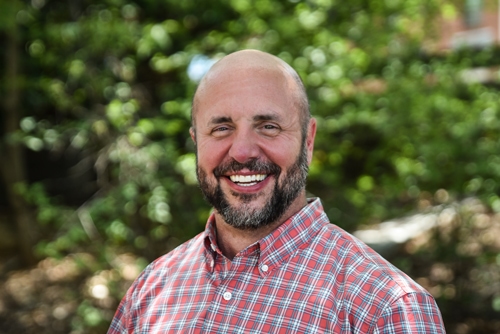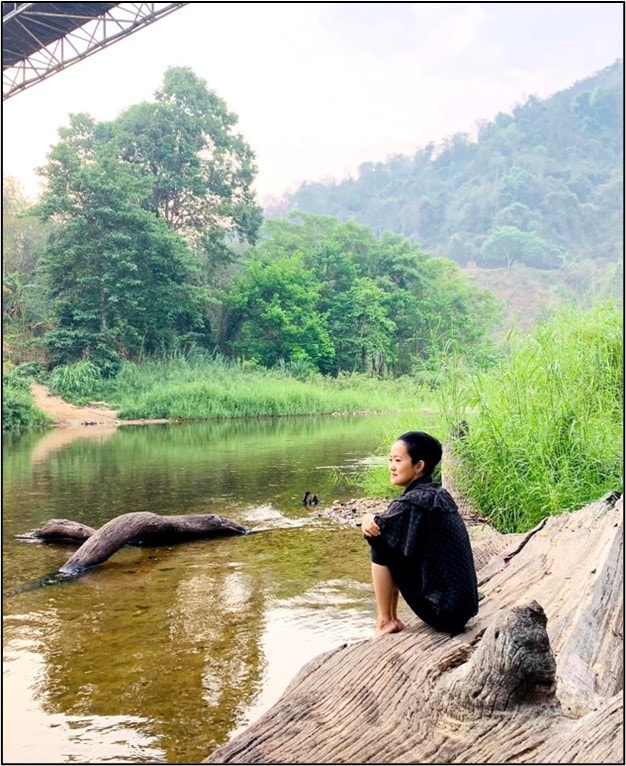What happens when a world-renowned landscape architect from Thailand comes to the United States as Designer-in-Residence to work with an award-winning architect whose passion is what he defines as watershed architecture? In Episode 10, hosts Sarah Thorne and Jeff King, Deputy Lead of the Engineering With Nature® Program at the US Army Corps of Engineers (USACE), are talking with Kotchakorn Voraakhom (“Kotch”), an international member of the American Society of Landscape Architects and founder of Bangkok-based landscape architecture company LANDPROCESS, and Derek Hoeferlin, Chair of the Landscape Architecture and Urban Design programs at Washington University in St. Louis. Derek and his colleagues at the Sam Fox School of Design & Visual Arts are hosting Kotch’s year-long appointment sponsored by the Pulitzer Arts Foundation.
Kotch is the first landscape architect to receive the UN Global Climate Action Award for her use of nature-based solutions in urban settings. Derek works on integrated water-based design strategies for major river basins, including the Mississippi.
Kotch was born and raised in Bangkok and witnessed its transformation from “green, to gray, to super gray—from a city with natural spaces to one that has been increasingly paved over.” Today, Bangkok is a city of over 10.7 million people. “It’s more crowded with less natural habitat for the people who live there, which impacts the quality of life and the quality of the existing green infrastructure, like canals and green space. Agricultural land has been abandoned.”
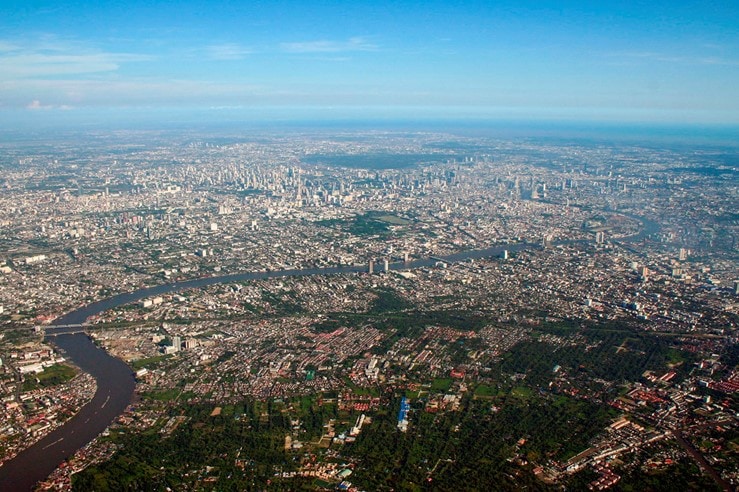
In 2011, flooding in Thailand displaced millions of people, including Kotch’s family: “I think that’s really the point where I started questioning who I am as a person living in Bangkok, who I am as a landscape architect, and how can make some changes to address this problem.” This led to her thinking about the role that nature-based solutions can play in landscape architecture, which has become the foundation of her practice. “When I started in landscape architecture in my school, I had been taught to really understand what’s the climate at the site, what’s the culture of the people, what are the constraints and benefit of the existing natural cycle there and then go on to design. I think my team at LANDPROCESS and I are really different from traditional architects and engineers. We work as a team with them but having us on the team really brings a different approach. We make sure nature-based solutions are part of the process.”

Derek grew up in St. Louis and after studying architecture in New Orleans and New Haven and practicing for multiple years returned in 2005 to begin teaching at Washington University in St. Louis. His experience with flooding events in Missouri, including the Times Beach Disaster in 1982 and the Great Flood of 1993, led him to realize that “water can be a very politicized thing and a very difficult thing to talk about when you’re talking about rebuilding communities and protecting them or integrating nature-based solutions, especially in an urbanized setting.” While teaching at WashU, he’s witnessed more frequent extreme events, floods, and droughts, and come to understand that these events are not just coastal problems. “This is not just in New Orleans. It’s happening up here in the St. Louis in the Midwest, and it’s even happening farther upriver, which led me to look at the whole Mississippi water system.” He came across the work of Eddie Brauer, Senior Hydraulic Engineer with the USACE St. Louis District, who has been working on Mississippi basin-scale challenges. And he met Kotch, who has been engaging with the United Nations on global-scale issues. These experiences led him to ask, “How do we come together as a collective, as designers, engineers, policymakers?” on what he calls “watershed architecture thinking”—working at the large watershed scale, back down to the scale of a city, and ultimately a building.

Jeff agrees that applying natural strategies at the watershed scale is critical and notes that this approach was key to the development of the International Guidelines on Natural and Nature-Based Features for Flood Risk Management. “We know now that if we just approach the challenge as one project in one location, then another project in another area of the watershed, we’re not thinking about a systematic approach. That can have downstream consequences that negate anything that we’ve tried to do in the way of creating resilience for that watershed.”
Kotch’s focus on using nature-based solutions in urban settings creates more resilient cities that can adapt to the increased flooding that results from climate change. And nature-based solutions are key to providing addition social benefit, especially to the most vulnerable communities. Her not-for-profit company, the Porous City Network, aims to improve the resilience of urban areas by transforming impervious surfaces into a system of productive public green spaces, which help mitigate excess water. This includes maintaining threatened landscape infrastructure such as agricultural land, canals, and ditch orchards, as well as interventions like urban farms, green roofs, rain gardens, and permeable parking that provide needed space for water absorption. “When it comes to nature-based solutions in our landscape-architecture approach, we must understand how nature works and let it work itself. It’s not about us controlling everything and measuring everything for our own need.” She adds: “We have to shift our mindset to really understand the problem.”
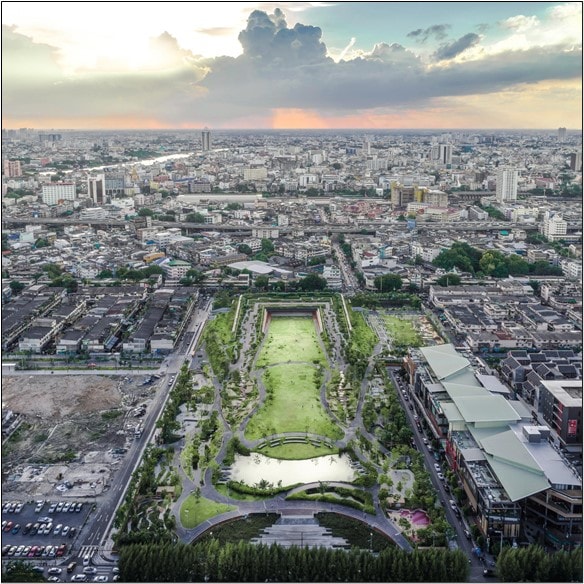
Kotch’s work is important and inspiring to landscape architects and urban planners. Speaking of her ground-breaking work in Bangkok, Derek notes, “They’re stunning and they’re beautiful. Her Chulalongkorn University Centenary Park—the scale of what it does embedded in the city of Bangkok—is so inspiring because you see it’s not just a pocket park, it’s a big project because it needs to accommodate a lot of water and hold it, to slow the water down, then eventually release it into the system. But most of the time it’s a public space for people to gather, to communicate, for students to recharge, for tourists, and as a place to have different events. It’s multi-use, and it’s not just solving the flood risk problem. It’s creating opportunities.” He adds: “I hope to see more of those types of projects happening in places like St. Louis, that really bring the nature-based systems that we’re talking about and solutions, but also make those places accessible for as many people as possible.”
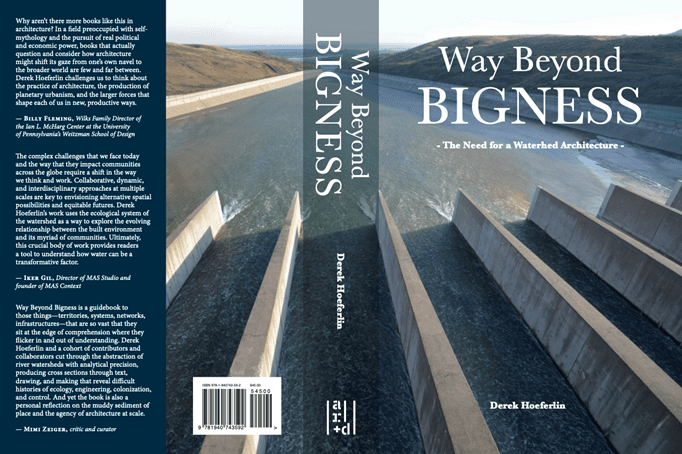
Derek, an acclaimed architect in his own right, has a book coming out soon entitled Way Beyond Bigness: The Need for a Watershed Architecture. He presents the importance of understanding the massive scale of watersheds, like the Mississippi River watershed, and compares it to watersheds of the Mekong and Rhine Rivers in Asia and Europe. “The scales are radically different, but it’s interesting to assess things that don’t seem quite similar together and try to find different ways of understanding them. The speculation section, which is what we also do as designers, is where we think forward into the future. So, in the third part of the book, we have serious conversations about the future and collaboration. How do you get on the ground and catalyze communities and different groups to get together, to take action? Thinking about the whole watershed is daunting, but if you give people the tools and the language to really think about the nuances, I believe then we can start to enact change.”
Jeff, Derek, and Kotch go on to talk about the importance—and challenge—of engaging a diverse set of stakeholders in landscape-scale projects. As Derek notes, “It’s not just a bottom-up or top-down approach. It’s both—we need to be able to listen.” Kotch notes that a key word in stakeholder engagement is “vulnerability” both from a people and a nature perspective. “Historically, there have been so many stakeholders left behind in decision making about water. Having them as part of the process is very critical. We must reverse our approach and build solutions from the ground up.”
And, as Jeff notes, landscape architects play a critical role doing just that: “Oftentimes when talking with the public and sharing information on model outcomes you’re presenting graphs and figures. The message or the concept you are trying to convey can sometimes be missed. Landscape architects have a way of communicating with very broad and diverse stakeholders. That is where it becomes incredibly important for Engineering With Nature—to be able to highlight the engineering outcomes that can be achieved through different projects, using landscape-architecture renderings to provide a better sense of the environmental and social benefits that can also be achieved. Nature-based solutions are dynamic systems—they change over time. Landscape architects can show this progression, which, in turn, informs our adaptive management process. This becomes very important as we work with resource managers and regulatory agencies and the public to maximize the function of these projects over time.”
Kotch is excited about her year at Washington University in St. Louis as the Designer in Residence. She’ll be co-teaching at a landscape architecture studio with Derek while learning about urban challenges and watershed management in the US. And she’ll be working with Derek and his team on the development a project with the theme of ecologies of access for vulnerable sites at St. Louis. She hopes to involve the community in St. Louis in both the process and the outcome. The EWN Project team will be involved as the project develops.
“We’ve learned so much today about the critical role of landscape architecture and how it plays a really important part in fostering tough conversations, a new shared future and really getting everyone involved, visualizing different futures,” Jeff notes. “I see this as a continuing opportunity to inform our thinking about how we create resilience in the future and how we get to these nature-based strategies.”






